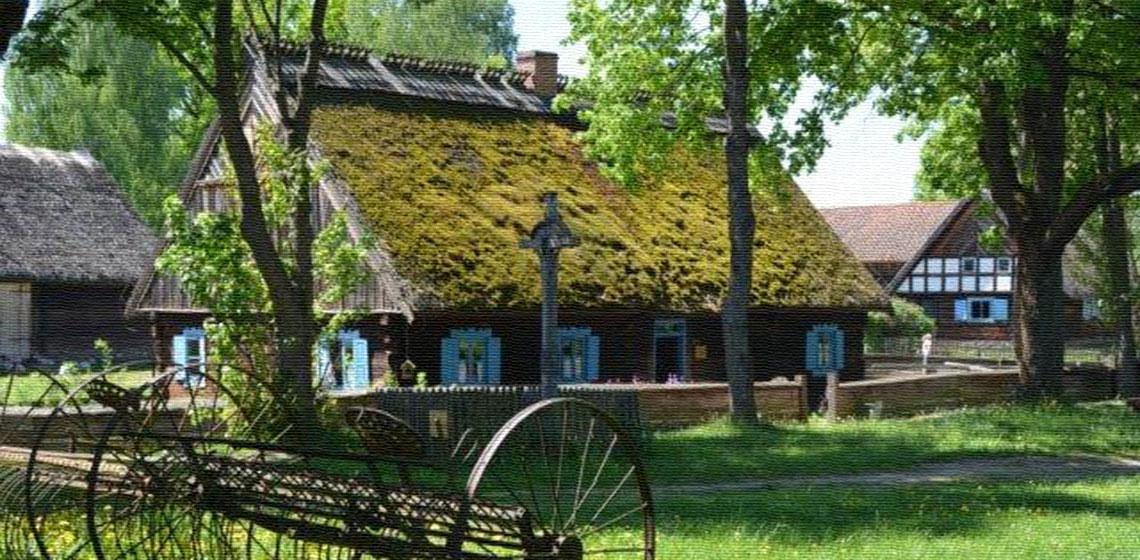Muzeum Budownictwa Ludowego (PL)

Before WWII, Kaliningrad was the capital of Prussia and was referred to as Königsberg. In 1909, at the initiative of the provincial Conservator of Historical Monuments Richard Dethlefsen an open-air museum was founded in the North-Eastern part of the Königsberger Zoo in Hufen just outside the city centre, called the Ostpreußisches Heimatmuseum.
Dethlefsen, born in Danish speaking Southern Jutland had taken the Scandinavian Skansen museums as example. One of the new things was, among others, to have copies built by craftspeople still being able to build ‘the old way’ instead of using original buildings. The houses were meant to be in use as a living history village – much in contradiction with many other ethnographic museums which were uninhabited. It was the first larger ethnographic open air museum outside Scandinavia. The region the museum was themed with was East Prussia (Warmia, Masuria and the Powiśle), an area which is now partly in Poland, Russia and Lithuania.
Four years passed of building copies of wooden vernacular dwellings from the 17th – 19th centuries. From the pre-Teutonic period, a box tomb and a tumulus of the Bronze Age were reconstructed. The Kaliningrad Ethnographic Park, "Dorfmuseum" opened in 1913, just before WWI.
As a sign of cultural unity of the ‘Greater Germany’ between 1938-1942 the houses were transferred westward, to Osztynek, into an area of 35 hectares. This site was particularly interesting as it is near Stębark (De: Tannenberg), where the Germans won their first victory against the Russians in WW1. It is also the site (Grunwald) of the 1410 battle when the German Order lost from the Polish army.
The furniture and other movable items have been lost by the end of WWII. After the war 12 houses were repaired or rebuilt and are now preserved objects witnessing both of the 17th – 19th centuries as of the early 20th century when they were built and moved. Copies of houses were continued to be built after the museum had moved to Poland.
In 1962, the Ethnographic Park was created as a branch of the Mazury Museum in Olsztyn (today - the Museum of Warmia and Mazury). In 1969, it was transformed into the Folk Architecture Museum – Ethnographic Park in Olsztynek. The independent museum became a scientific, research and educational institution and has remained such until today. The Museum of Vernacular Architecture (MBL, Muzeum Budownictwa Ludowego - Park Etnograficzny w Olsztynku) as it is called presently, is seated on 35 hectares and houses 78 architectural objects representing a diverse rural development. The interiors of the buildings consist of exhibits gathered after 1945, presenting traditional methods and rituals in the country in the 19th and 20th centuries. It is part of the larger Ethnographic Park which counts 93 hectares with the Jemiołówka River flowing through it. There are also reconstructed archaeological remains exhibited, like an Iron Age tomb of the Kurgan Culture. The Olsztynek Ethnographic Park possesses 11 thousand mobile exhibits of material folk culture from the 19th and the 20th century as well as modern folk art and crafts and a rich library.
